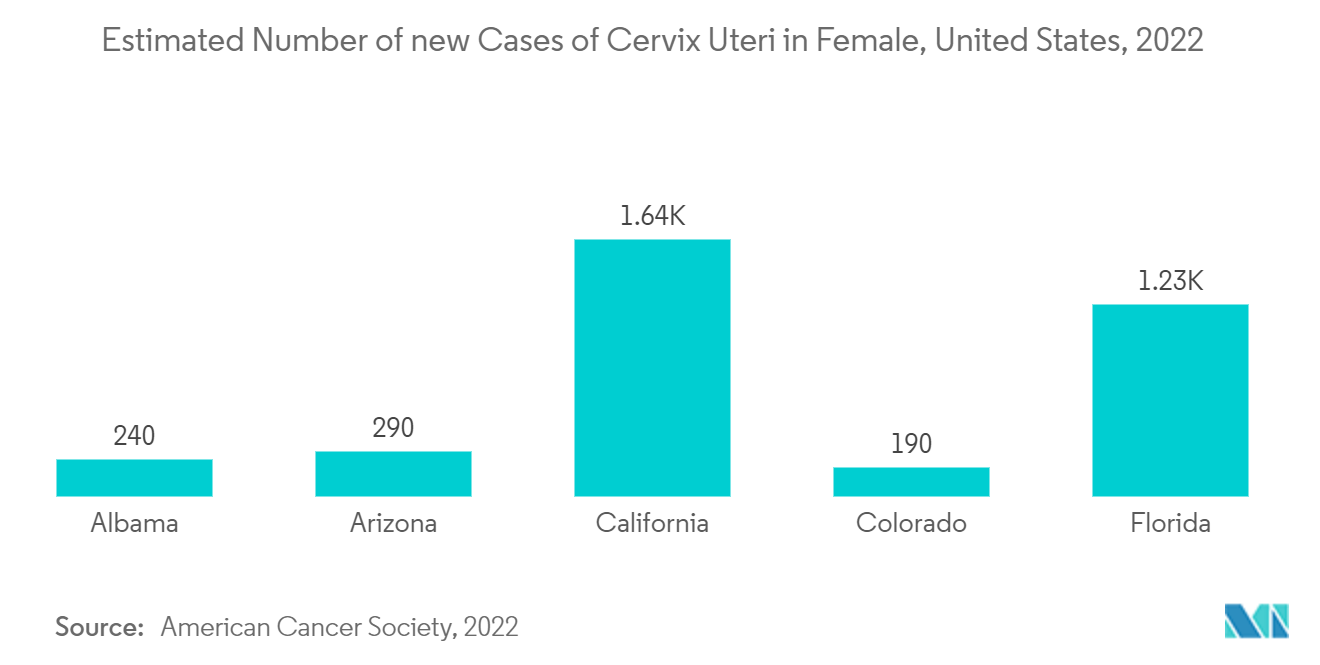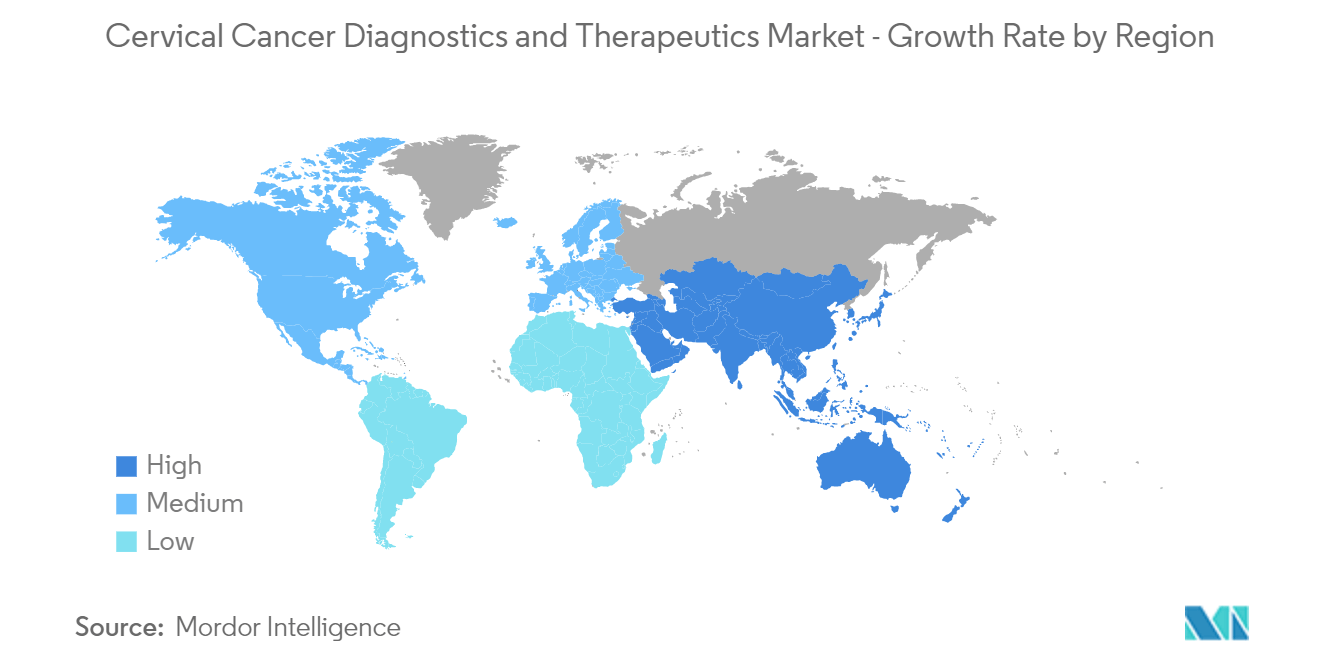Market Trends of Global Cervical Cancer Diagnostics and Therapeutics Industry
The HPV Test Segment is Expected to Hold a Major Market Share Over the Forecast Period
The Papanicolaou test is a cervical screening method that can detect precancerous and cancerous processes in the cervix and colon. Abnormal findings are frequently followed by more sensitive diagnostic procedures and, if necessary, interventions aimed at preventing cervical cancer progression. An HPV test is recommended for women over 30 to detect the virus. The screening aids in detecting precancerous lesions caused by HPV, which can then be removed to prevent the development of invasive cancers.
The major factor driving the segment's growth includes the rising burden of cervical cancer across the world. The disease is more commonly found in females. According to the report of the HPV Center Japan in October 2021, in Japan, approximately 12,785 new cervical cancer cases are diagnosed each year. Cervical cancer is the tenth leading cause of cancer in women in Japan. Cervical cancer is the second most common cancer in Japanese women aged 15 to 44. Therefore, the incidence of cervical cancer is found to increase every year. In most cases, cervical cancer can be prevented through early detection and treatment of abnormal cell changes in the cervix years before the cancer develops. Therefore, with the increasing adoption of early diagnosis, the market is expected to grow positively during the forecast period.
Moreover, increasing product launches in the country boost the market. For instance, in May 2021, Becton, Dickinson, and Company introduced the industry's first self-collection claims for HPV screening, which have been CE marked under the IVD Directive 98/79/EC. Thus, due to the increasing demand for Pap, HPV, and other tests for cancer screening, the market is expected to grow.
Thus, all the aforementioned factors are anticipated to drive segment growth over the forecast period.

North America is Expected to Hold a Significant Share in the Market Over the Forecast Period
North America is one of the largest markets for cervical cancer diagnostics and therapeutics. The large market share is attributed to the high awareness of disease prevention among women in the region, as well as to the many initiatives launched to prevent cervical cancer that have increased the reach of insurance coverage for cervical screening tests, especially for low-income women.
Cervical cancer is one of the leading causes of death among women in the United States. According to the American Cancer Society, based on data updated in January 2022 and the estimates for cervical cancer in the United States for 2022, about 14,100 new cases of invasive cervical cancer will be diagnosed. Since there are more cases of cervical cancer in the U.S., the market is likely to grow quickly over the next few years.
Additionally, favorable government policies in the United States are expected to drive the overall market during the forecast period. Updates from the Centers for Disease Control and Prevention in February 2022 say that the National Breast and Cervical Cancer Early Detection Program (NBCCEDP) for screening for breast and cervical cancer has helped the market grow in the United States as a whole.Additionally, the month of January has been designated "Cervical Health Awareness Month" by the United States Congress. The National Cervical Cancer Coalition (NCCC) and its many local chapters across the country raise awareness about cervical cancer, HPV disease, and the importance of early detection during the month of January. While NCCC chapters host events throughout the year, Cervical Health Awareness Month is observed in January, and chapters work to raise awareness in their communities.
However, growing product launches by the key market players support the market's growth. For instance, in September 2021, the US FDA granted accelerated approval to tisotumab vedotin-tftv, a tissue factor-directed antibody and microtubule inhibitor conjugate, for adult patients with recurrent or metastatic cervical cancer with disease progression during or after chemotherapy.
Considering all of this, it seems likely that the studied market will grow in the United States over the next few years.


